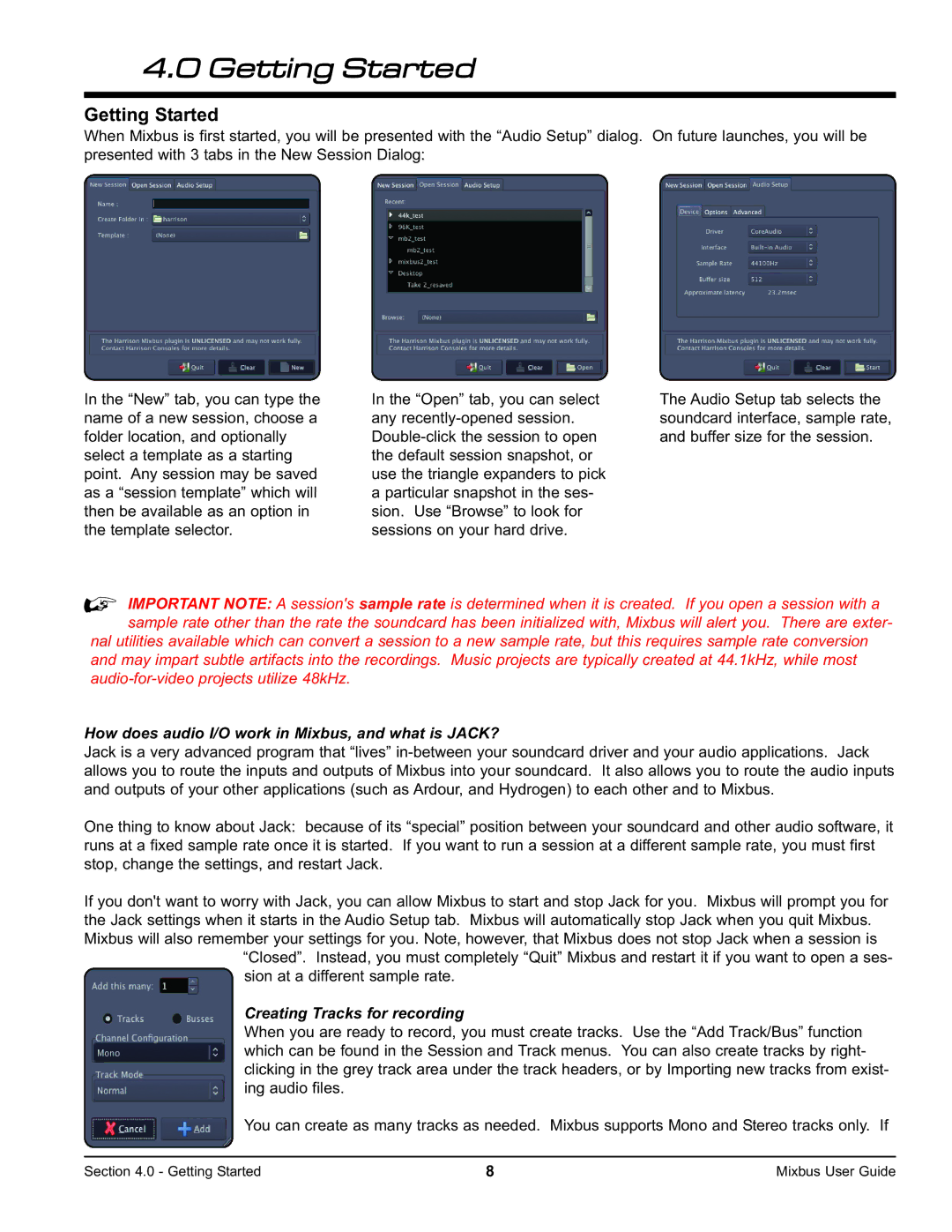
4.0 Getting Started
Getting Started
When Mixbus is first started, you will be presented with the “Audio Setup” dialog. On future launches, you will be presented with 3 tabs in the New Session Dialog:
In the “New” tab, you can type the name of a new session, choose a folder location, and optionally select a template as a starting point. Any session may be saved as a “session template” which will then be available as an option in the template selector.
In the “Open” tab, you can select any
The Audio Setup tab selects the soundcard interface, sample rate, and buffer size for the session.
%IMPORTANT NOTE: A session's sample rate is determined when it is created. If you open a session with a sample rate other than the rate the soundcard has been initialized with, Mixbus will alert you. There are exter-
nal utilities available which can convert a session to a new sample rate, but this requires sample rate conversion and may impart subtle artifacts into the recordings. Music projects are typically created at 44.1kHz, while most
How does audio I/O work in Mixbus, and what is JACK?
Jack is a very advanced program that “lives”
One thing to know about Jack: because of its “special” position between your soundcard and other audio software, it runs at a fixed sample rate once it is started. If you want to run a session at a different sample rate, you must first stop, change the settings, and restart Jack.
If you don't want to worry with Jack, you can allow Mixbus to start and stop Jack for you. Mixbus will prompt you for the Jack settings when it starts in the Audio Setup tab. Mixbus will automatically stop Jack when you quit Mixbus. Mixbus will also remember your settings for you. Note, however, that Mixbus does not stop Jack when a session is
“Closed”. Instead, you must completely “Quit” Mixbus and restart it if you want to open a ses- sion at a different sample rate.
Creating Tracks for recording
When you are ready to record, you must create tracks. Use the “Add Track/Bus” function which can be found in the Session and Track menus. You can also create tracks by right- clicking in the grey track area under the track headers, or by Importing new tracks from exist- ing audio files.
You can create as many tracks as needed. Mixbus supports Mono and Stereo tracks only. If
Section 4.0 - Getting Started | 8 | Mixbus User Guide |
